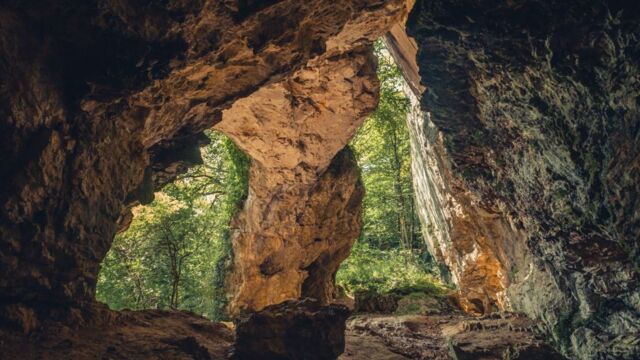In today's world, it is possible to read the future in faeces, thanks to scatomancy. This is what researchers from the CNRS have done with animal droppings found in a cave in Ardèche. Nearly 30 years after the discovery of the Chauvet cave by three cavers, fossilised excrement, also known as a coprolite in scientific language, was found by archaeologists deep in the cave. It belongs to a she-wolf living in the cave 35,000 years ago.
Discover our latest podcast
A cave of exceptional richness
Listed as a Unesco World Heritage Site, this cave contains numerous paintings and animal engravings of incomparable richness. It is one of the most beautiful prehistoric caves in the world. There are hundreds of animals painted with red ochre, engraved with flint or traced with a finger or charcoal. Hair, lions, rhinoceroses, and more than fifteen different species appear on the cave walls.
Un canidé vieux de 35 000 ans de la grotte Chauvet-Pont d’Arc a commencé à parler. https://t.co/09aYKlrqbs
— christophe Hitte (@HitteChristophe) September 5, 2022
This tweet translates to:
A 35,000-year-old canine from the Chauvet-Pont d'Arc cave has begun to speak.
In addition to many representations of animals, there are also more concrete elements, such as this excrement fossil found a year ago. The latter was then analysed by Christophe Hitte, a CNRS research engineer at the Institute of Genetics and Development in Rennes. Using the radiocarbon dating method on bone fragments present in the coprolite, his colleagues in Paris first discovered that the excrement was 35 000 years old. He said:
This corresponds approximately to the age of the paintings
A wolf that ate a bear
After dating the fossilised excrement, Christophe Hitte tried to find out which animal it belonged to. Thanks to an in-depth DNA analysis, the researchers were able to reveal that the animal in question was a wolf, or rather a female canid, genetically close to the European grey wolves. The scientist said:
It is a distant descendant because the species identified is extinct
The abundant presence of DNA traces in a fossil as old as the one found in the Chauvet cave is quite rare according to the researchers. And while wolf DNA was clearly detected, some bear genetic traces were also found in the coprolite. According to the researcher, the animal would have eaten a cave bear before relieving itself in the cave.
The results of this study have already been published in the British scientific journal Ecology and Evolution on 23 August 2022. The researchers state that the information obtained on the diet of the wolf, based on DNA studies, was confirmed by archaeological observations. Christophe Hitte concluded:
This is very interesting because we are continuing to make progress in our knowledge of the species that inhabited the Chauvet cave
This article was translated from Gentside FR.
Read more:
⋙ Great white shark poops on a group of divers (VIDEO)
⋙ Freezing your poop could save your life, researchers claims















